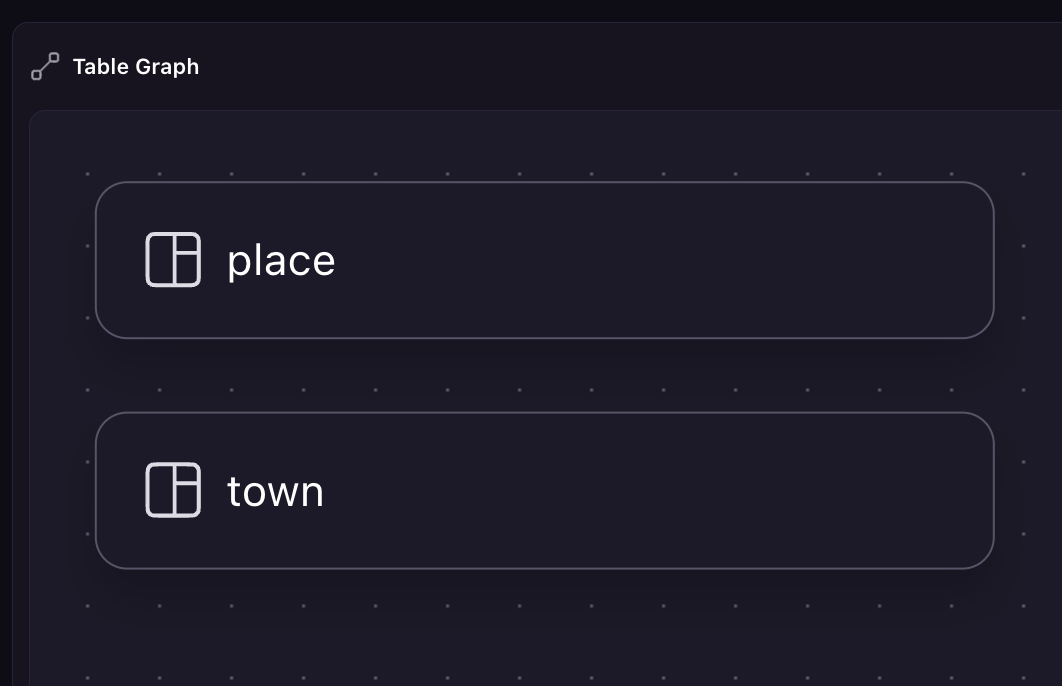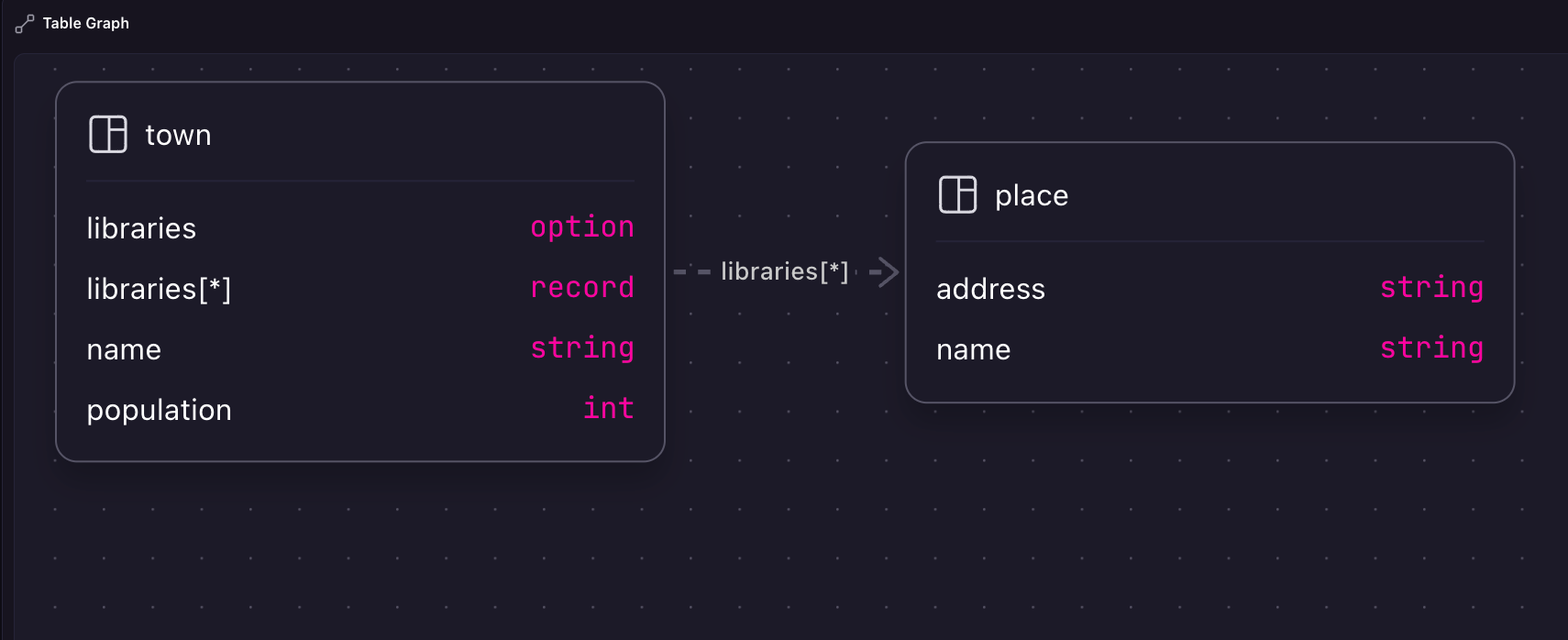

15: Viewing the schema
Another advantage to having a schema is that the Designer view inside Surrealist can use it to show a graphical overview of the types used in the database.
Without a schema, it isn’t able to show much of anything. At the moment, all that it knows is that the database has two tables. But it has no idea whether name
will always be a string, or whether libraries
will always be an array that holds place
records.

The whole table doesn’t need to be made SCHEMAFULL
though. Instead, DEFINE FIELD
can be used to define just one field at a time. This lets the table stay flexible for the most part, except for certain fields that we want to behave in a certain way.
Here is the DEFINE FIELD
statement we used for practice on the last page.
DEFINE FIELD population ON schemafull_town TYPE number;
Following this format, we can define five fields to ensure that the fields for the place
and town
records can only be of a certain type.
The INFO FOR TABLE
statements are no longer empty, showing the definitions for each field.
The type of the last DEFINE FIELD
statement above is a bit long: option<array<record<place>>>
. That is because:
- Records are always of type
record<record_name>, so places arerecord<place>and towns arerecord<town>. - The
librariesfield should be able to hold more than one, which makesarray<record<place>>. - Not all towns have libraries, so we don’t want to return an error if a
towndoesn’t have this field. By wrapping it in anoption, thelibrariesfield doesn’t need to be set in order to create atown.
Once these statements are executed, Surrealist will be able to make a much more informative graphical schema for us.
